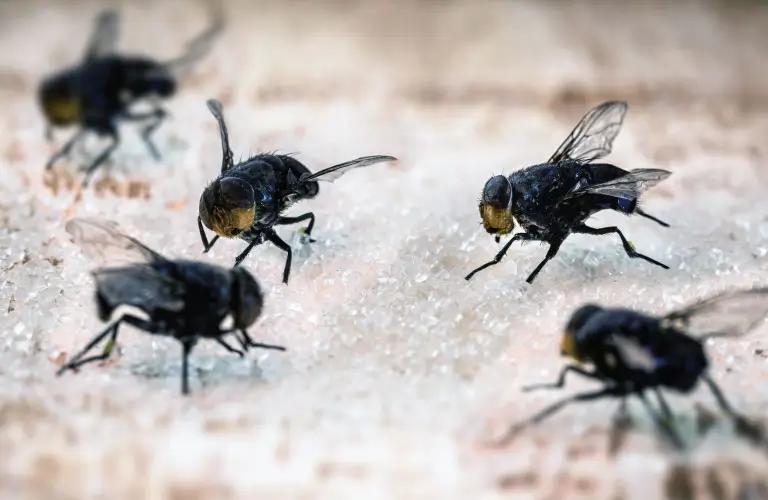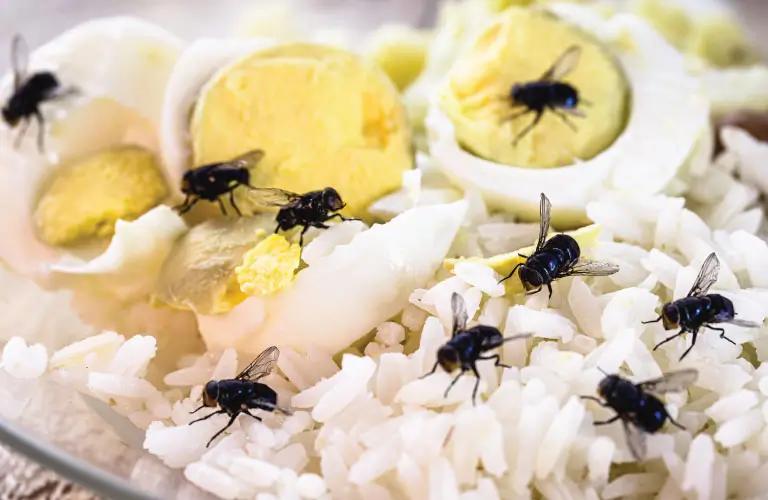


FLY
Flies can be extremely irritating pests. If left untreated, infestations can turn serious within a few days. Flies pose a significant threat to the health of humans, pets, and livestock, by spoiling food, spreading contaminants, and causing allergic reactions. Flies are known to infest homes, businesses, and other structures where they can spread diseases like Salmonella and E. Coli.
There are two types of flies that most commonly cause infestations in Australian homes: the House Fly and the Fruit Fly. Being able to differentiate between these irritating pests will assist with determining what may be causing an infestation.

Common Signs of a Fly Infestation
- Fly droppings on window sills or benches.
- Maggots in bins or food areas.
- Unpleasant smell of composting carcasses that flies may be feeding on.
- Regular sightings of flies buzzing around waste or other areas of your home.

Preventing a Fly Infestation in your Home
- Sealing gaps around doors and windows that pose as an access point for flies.
- If using a compost bin, ensure it is sealed or turned frequently.
- Ensure there are no holes or gaps in your roof for possums or rodents to enter - dead possums and rodents are a magnet for flies.
- Sanitise pet bedding and food areas regularly.
- Removing indoor and outdoor rubbish and food waste frequently.
- Avoid leaving uncovered food where flies can access.
Staying on top of fly treatments is crucial, especially in the warmer months. Annual Pest Management have several fly treatment procedures that isolate the problem, eradicate the risk, and sanitise the area. Our treatments can penetrate the hardest-to-reach spots both inside and outside.

House Fly
A major carrier of disease, the common House Fly is attracted to human and pet food, rubbish, animal carcasses and faeces. You will often find the house fly resting on floors, walls and ceilings inside your home. House Flies will lay eggs in any warm, humid climate. Eggs are laid in several batches, with each batch including 75 to 100 eggs. Hatching begins 12 to 24 hours after the eggs are laid.

Fruit Fly
On the other hand, the Fruit Fly is attracted to sugary substances and mostly feeds on ripe fruit and vegetables, soft drinks or alcohol. They are a lot smaller in size than the common house fly, growing up to 4mm long with red or dark coloured eyes and a tan body with a black abdomen.
Whilst Fruit Flies can live all year round, their numbers increase in spring and summer when the weather is warm. Their life cycle lasts up to 25 days depending on the amount of food that they have access to, and the conditions of their environment. Flies often access homes through structural issues like damaged weatherstrips or screens.

